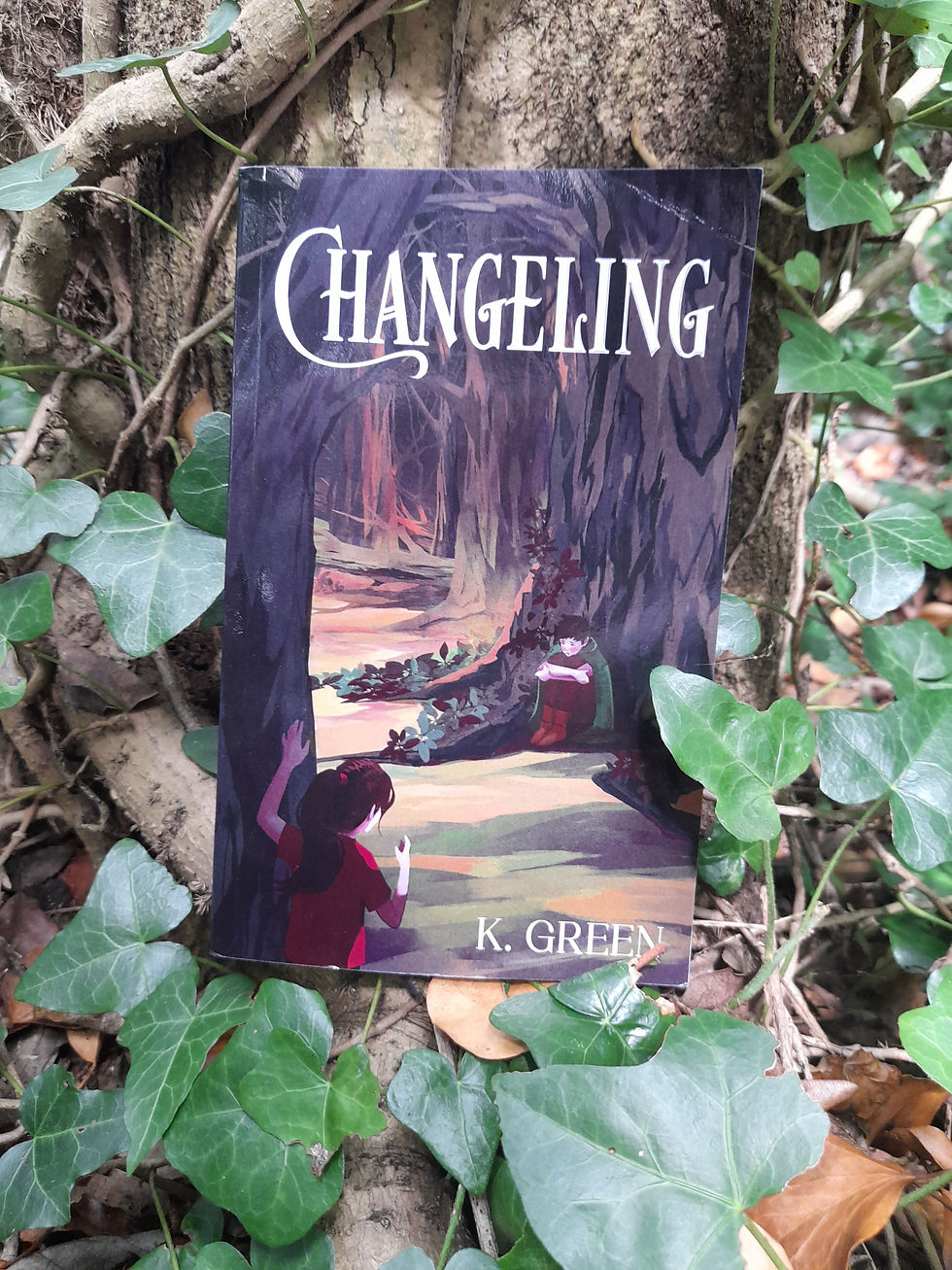A Book, a Skeleton and a Ring: Inspirations Behind Changeling
- kellydotgreen
- Jul 27
- 4 min read
Updated: Oct 4
Changeling was inspired by two things: reading about changelings in The Folklore of Discworld in October 2023[1], and discovering the body of an Anglo-Saxon woman on an archaeological dig in the summer of 2019.

When I picked up The Folklore of Discworld, I expected a whimsical read with lots of interesting titbits about a fictional world I love. I certainly got this, but I also learned a bit about the darker side of English folklore, and changelings certainly belong to this. The authors described children being abandoned, beaten, and treated in various other horrendous ways, all in the name of exposing their ‘changeling’ nature. These poor souls weren’t believed to be human at all, but children of the fairy folk who had been ‘swapped’ in for a human child, who was believed to have been stolen.
This made for a disturbing reading, and it occurred to me that I wanted to tell a story about one of those poor children, whose parents and neighbours believed them to be evil and ‘other’ for reasons entirely out of the child’s control. I put the idea to one side, however, as I wasn’t keen on writing a really sad story, which this would surely be.
Yet the idea of writing about a changeling child wouldn’t leave me alone, and this soon collided with another idea I’d had a couple of years earlier – an idea that came into being while I was excavating an Anglo-Saxon cemetery in Northamptonshire. A few of us were scattered across a large site – a stripped back field surrounded by other fields. We each worked alone. It was quiet, peaceful. The dark, ovular shadows of graves bloomed from the orange soil, waiting to be investigated.
The grave I was working on was a double grave, belonging to a man and a young woman – likely a married couple. Their bones were well preserved, and they were each surrounded by grave-goods – beads, jewellery, brooches and knives, all corroded by age. I found myself wondering who they might have been and what their lives were like, as one does when left alone with the long-since dead.
As I gradually exposed the skeletons with my trowel and brush, I saw that the woman looked to be about my height. I noticed a ring by her finger bones – a delicate band of copper, green with age and decay. It looked as though it might fit me. Once I’d surveyed, drawn and photographed the skeletons, I lifted the ring from the soil, ready to place it in a special finds bag. In that moment I felt a sense of powerful connection with the woman. No one had touched that ring in over a thousand years! Flushed with euphoria, I bagged the ring and lifted the rest of the grave goods.
Probably the dead Anglo-Saxon woman wouldn’t have wanted the likes of me messing around with her jewellery, much less digging up her bones. But this is what archaeologists do, and it’s how we learn about the past. When I touched the ring, I imagined myself being flung back in time and meeting the woman and her husband. This seemed like an excellent idea for a story, but I wasn’t sure exactly what shape it would take, so I set it to one side for later consideration.
That experience came back to me soon after I’d learned about changelings, and a fully-formed idea was born: a girl on an archaeological dig would discover the skeleton of a boy who’d been abandoned on suspicion of being a changeling. On handling his grave goods, she would be flung back in time to save him from an untimely death. The story wouldn’t be too sad, as I’d feared at first, because it would focus on rescue, healing, growth and friendship, with plenty of fantasy and folk horror elements thrown in.
I was in the middle of writing another book when I had the idea for Changeling, but I couldn’t wait to start writing it. I made a start that same week. Three months later, the first draft of Changeling was complete.
I researched the myth of changelings while I wrote. I discovered that fears and beliefs about them were rife in the 18th and 19th centuries. However, this was a period I knew little about, and I was keen to set my novel in a period I felt more at home with: the later medieval period. This prompted me to look into the origins of the changeling myth. I discovered that, while the word ‘changeling’ didn’t enter the English language until 1534[2], the idea of changelings – of child substitution by supernatural beings – existed much earlier, and was part of medieval folklore.
Setting the story in the thirteenth century allowed me to build on my knowledge of this period, and to take advantage of the conflicts between Christian and ‘folk’ beliefs characteristic of those times.
As for the main characters, Ally and Alf, they weren’t inspired by anyone in particular. As with many of my characters, they seem to burst into being inside my head and nag at me until I write their stories.
So there we have it: Changeling was brought to life by a book, a skeleton, and a ring.
Happy reading until next time.
Kelly
[1] Terry Pratchett and Jacqueline Simpson, 2009. The Folklore of Discworld: Legends, Myths and Customs from the Discworld with Helpful Hints from Planet Earth.
[2] Sawyer, R. A. 2018. Child Substitution: A New Approach to the Changeling Motif in Medieval European Culture. PhD Thesis: University of Leeds.

Comments